Contributed byJane Forbes, Finance Chair
When I began to think about how I would describe the Church’s financial status at the Annual Meeting, I tried to find words that were both honest and upbeat. The ones that came to mind, like “OK,” “not too bad,” “so-so,” and “meh,” did not seem to meet the second requirement. I eventually decided to use a different approach and say that compared with almost everything else that happened last year, our financial performance was “outstanding.”
I. The 2021 Operating Statement. The middle column, labeled “2021 Actual,” in the attached spreadsheet shows the income received and the expenses paid last year for the day-to-day operation of the parish. Both our revenues and expenses were significantly below budget. Fortunately, the expense savings were about three times greater than the income shortfall. As a result, the 2021 net operating loss of $106,000 was about $50,000 less than the amount projected at the beginning of the year.
A. 2021 Income. On the income side, pledge payments were actually somewhat higher in 2021 than they were in 2020. “Non-pledge” donations were much lower, however. The new lease for the Woodbridge Street parking lot includes a minimum monthly rental, which has been helpful, but workers have not gone back to their offices in sufficient numbers to increase parking income very much. When and how much that will improve is still uncertain.
B. 2021 Expenses. There are several different reasons why many expenses in 2021 were lower than the amounts budgeted. These include significant items, like a staffing change and Covid 19. They also include random occurrences, such as the dates when big checks cleared the Bank and the weather. Also, we have often included more in the budget for some kinds of expenses, such as repairs, than we typically spend. While the total expenditures were lower than estimated, it is worth noting that inflation is affecting some costs, including utilities, paper and altar supplies. When reach the point when we can serve food again, those costs will go up too.
II. Bequests. While they are not reflected in the operating statement, we are glad to report that we received bequests last year from Tish Brown and Nancy Vom Steeg and that we also received a distribution from a trust established by Millie Stennis that was added to the restricted fund she created during her lifetime for special music.
III. The 2022 Budget.
A. Projected Income. The income projected in the 2022 budget generally tracks the 2021 results. It might be noted, however, that there is a very impressive increase in revenue expected from all the weddings Emily has been able to schedule for this year.
B. Projected Expenses. There are several significant changes in the proposed expenses for this year.
i. Staff Compensation. The budget reflects the changes in compensation approved by the Vestry last year. Those include the first increase in Emily’s pay since she joined us late in 2018 and increases in other staff compensation that reflect inflation and the reclassification of the office positions.
ii. Ministry Support. The budget also includes a new $15,000 expenditure for “ministry support.” While the exact purpose for which those funds will be used has not yet been determined, the objective is to help reduce some of Emily’s work load.
iii. Audit. The Diocese of Michigan requires that parishes have a full CPA audit of their financial statements periodically. Therefore, an $11,000 expenditure has been added to the budget for that purpose. This is a task that involves more work than the “reviewed” financial statement we have been preparing and may not have to be done every year in the future.
iv. New Cable Service. The budget includes a new expense line for the cost of the new fiber optic cable that is (finally) being installed. It is anticipated that this expense will be partially offset by the elimination of some former internet and telephone bills.
IV. Investments.
A. Overall Results. One aspect of the Church finances in 2021 that clearly deserves to be called “outstanding” is the performance of its investments. Those assets are managed through the Diocese of Michigan, which reported 12-month investment return of 13.64%. The total market value of the investments rose from $1,769,831 at the end of 2020 to $1,947,659 at the end of 2021. In addition to investment earnings, however, those changes include the $89,000 bequest to the special music fund mentioned previously and the withdrawal of $75,000 to cover operating losses.
B. Unrestricted Investments. About 75% of the Church’s investments are subject to restrictions that limit the amount that may be withdrawn at one time, the purposes for which they may be spent or both. The remaining unrestricted portion of the investments (which resembles a savings account) can be used for any Church purpose, including funding operating deficits. That subaccount had a market value of $533,651 at the end of 2020 and a somewhat lower market value of $497,480 at the end of 2020.
V. Where We Are and Where We Need to Go. The $106,000 deficit reflected in the 2021 operating statements is not likely to present an immediate threat to the future of the parish. If deficits continue, and especially if they increase, the parish could eventually face very difficult choices.
To me, continuing to spend reserves to support day to day operations year after year seems like being forty years old and still needing to rely on checks from your grandparents to make ends meet. (The “grandparents” in this case are Walter Cary, Maude Robinson and, perhaps, Margaret Hammond.) While deficits are a longstanding problem, they are not insurmountable. With good stewardship, we could resolve the issue in two or three years. Not only would that help to protect our future, having funds to support new projects and new visions could actually be a great experience.

Recent Comments